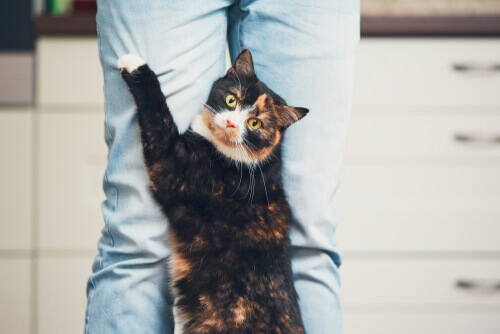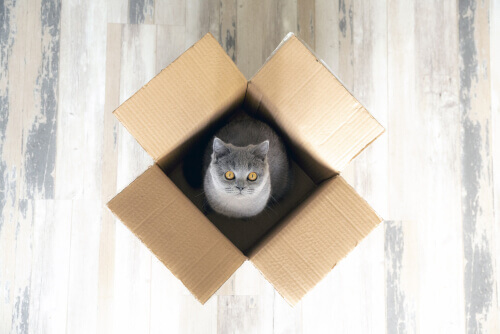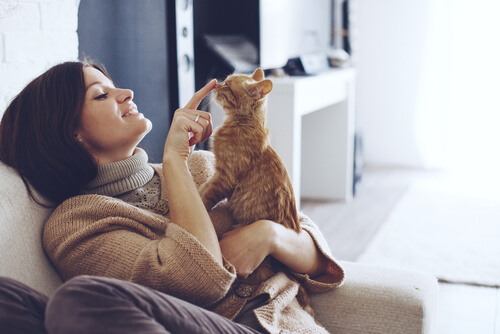9 Things You Didn't Know Your Cat Loves

Have you figured out what your cat’s favorite toys are? Given that felines are intelligent and sensitive creatures, they tend to have a long list of preferences and aversions. Their owners, after long periods of careful observation, may come to identify their eccentricities. Just the same, there may be many things you never knew your cat loves.
It’s good to keep in mind that the things cats find interesting, fun, and exciting can change over the course of their lives. One day, they might love a feather toy, and the next day be completely bored with it.
Your job is to recognize when your pet’s interests change so you can keep it healthy and happy. While tastes vary from one pet to another, the following advice will be a great place to start.
1. Pushing things off the table to see how they break
By this point, you may have noticed that your cat loves pushing things off tables and shelves. No matter how many cat toys you buy, your pet continues to knock objects off surfaces and break them. You’re most likely asking yourself why cats are so fascinated with these activities.
Well, each time your cat pushes an object to make it fall, the result is different. It may be fun for your pet to see how your belongings bounce in different directions or how it breaks into several pieces.

2. Creeping into boxes and pouncing out of them
Why are cats so obsessed with boxes? These felines are creatures of comfort and, sometimes, being in a box is very comfortable for them. Other times, being in a box gives them a sense of safety, as if they were protected all around.
Boxes are also fun for hiding, jumping out, and surprising owners and other pets. It’s fun to think that cats secretly enjoy seeing our faces of surprise and terror or how their cat friends jump. Just like we humans enjoying surprising and scaring one another, this may be a cat’s way of playing practical jokes.
3. Stalking electric cords
Some cats are fascinated by electric cords. They may nibble cables, bat at the tags on them, and even grab them and try to chew on them.
Cats who do this may have learned that playing with cords is a good way to get their owner’s attention. Or maybe interacting with these objects is fun because they move in different ways and spark their interest.
4. Rubbing their head against you
This action is a way for cats to create an instant connection with you. And, of course, for pet owners, there’s nothing sweeter than when your pet wants to be near you.
Cats do this in an attempt to give you their facial pheromones and show you how much they trust you. This is their way of saying goodbye or that they feel safe around you.
5. Your cat loves it when you scratch its back
Has your cat ever approached you only to turn around and show you its rear end? The area where your cat’s back meets its tail is a spot that they can’t reach with their own paws in order to scratch. Sometimes they may use their tongues, but it’s not quite enough.
So, some cats have learned to back up towards their owner’s hands when they want a good scratch. Then, the express their satisfaction by purring, waving their tails, or perhaps arching their backs toward your hand or foot.
6. Smelling your face is one of the things your cat loves most
Cats are curious by nature. They love to smell everything, especially the objects of their affection… In this case, your face. There’s no transcendental explanation for this behavior. It’s simply a way for them to get to know and recognize you. If your cat wants to smell your face, let it – it’s positive behavior.

7. Kneading with their paws
Maybe all cats were breadmakers in a past life. Either way, it’s very common to see them move their front paws as if they were kneading bread. According to experts, this behavior means cats are happy.
This reminds cats of when they were babies and massaged their mother’s mammary glands. In general, they purr or meow as they knead.
8. Fighting with your feet
This type of attack isn’t anything to worry about. When our cats try to fight with our feet, it’s because they want to play with us.
Cats are attracted by the movement of your extremities and this makes them one of their favorite toys. What’s more, pouncing and attacking your feet is something they love to do because it’s great fun.
9. Spying
Spying is a unique, and sometimes disconcerting, behavior pattern that cats stand out for. Have you ever woken up in the middle of the night to find your cat watching you? Or thought you were alone in the room only to discover that your cat is staring at your from behind? Then you know just what we’re talking about.
Cat’s love to observe. They can peer through the winder for hours, watching as neighbors, cars, and other animals go by. They may even stick their heads through the blinds or curtains to get a better view.
These are just some of your cat’s peculiar favorite things that bring love, humor, and charm to your world.
All cited sources were thoroughly reviewed by our team to ensure their quality, reliability, currency, and validity. The bibliography of this article was considered reliable and of academic or scientific accuracy.
- Turner, D. C., Bateson, P., & Bateson, P. P. G. (Eds.). (2000). The domestic cat: the biology of its behaviour. Cambridge University Press.
- Crowell-Davis, S. L. (2007). Cat behaviour: social organization, communication, and development. In The welfare of cats (pp. 1-22). Springer, Dordrecht.
- Mariotti, V. M., Amat Grau, M., Hervera Abad, M., Baucells Sánchez, M. D., & Manteca Vilanova, X. (2009). Factores ambientales implicados en el control de la conducta del perro y del gato: dieta, manejo y ejercicio. Clínica veterinaria de pequeños animales: revista oficial de AVEPA, Asociación Veterinaria Española de Especialistas en Pequeños Animales, 29(4), 0209-215.
- Wells, D.L., 2009. Sensory stimulation as environmental enrichment for captive animals: A review. Applied Animal Behaviour Science 118, 1–11.
